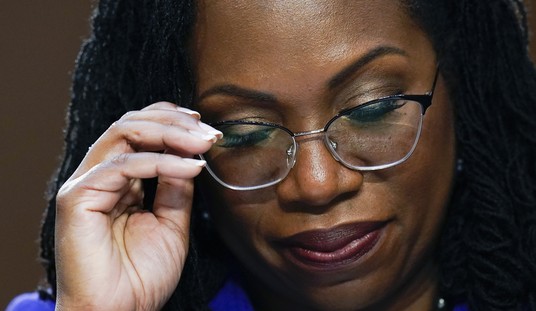After a losing presidential campaign, the candidate quickly (and often cruelly) is painted as an object lesson in what not to do — but that should not happen in 2008.
In order to truly revive itself, the GOP should be more like the real John McCain in the future, and less like the conservative cast of the past decade: George W. Bush, Dick Cheney, and Tom Delay. And it certainly should not look to the likes of Mitt Romney or Sarah Palin to lead a restoration.
You do the math: America has a moderate majority — 50% of Americans are centrists, compared to 20% who are liberal and 30% who call themselves conservative. Independents are the largest and fastest growing segment of the electorate. Republicans need to appeal to the center and find common cause with independents in order to win. And that’s something they have increasingly failed to do over the past decade.
John McCain lost because the country was suffering from Bush backlash, a reaction against a deeply damaged Republican brand, which had become associated with low and divisive attacks, arrogance, and ineptitude in office. In effect, Bush and Rove beat him twice — first in 2000 and again this year, when his campaign was staffed by RNC “experts” who had learned their trade under Karl Rove — and the old play-to-the-base tactics backfired badly this time.
The tragedy is that John McCain in 2000 set the standard for centrist message that would ultimately win this election for Barack Obama. He, more than any other politician of the last ten years, was a profile in courage to reach across partisan lines towards bipartisan coalitions in Congress. He almost single-handedly stood up against the self-dealing, ideological excesses and unprecedented pork-barrel spending that came out of Tom DeLay’s corrupt conservative Congress.
McCain’s come-from-behind win in the primaries was not only proof of the strength of the center but a repudiation of Karl Rove’s play-to-the-base approach because he won the Republican nomination without the support of right-wing talk radio and evangelicals.
The reason that John McCain was able to defy political gravity for so long and run ahead of the damaged Republican brand was his independence, not in spite of it.
Both John McCain and Barack Obama appealed explicitly to centrists and independents early on in this campaign. They ran against the polarizing establishment of their respective parties. Their differences on this ground can be fairly characterized as substance versus style, rhetoric versus record. But Obama’s appeals to the center were relentless, beginning with his introduction to the American people at the Democratic convention in 2004, which expressed the underlying insight, “There are no red states. There are no blue states. There are the United States of America.”
In the primaries, Obama beat Hillary two to one among independent voters. Over the course of the summer, McCain and Obama were neck and neck among independent voters, both with high approval ratings. McCain pulled briefly ahead with independents for a week in early September — and then three things happened: the financial crisis, the negative attacks, and Sarah Palin.
The fiscal crisis made the election a referendum on the Bush administration — and independents believe that the current president is the worst in recent history, rating even lower than Nixon or Carter. The McCain campaign tried to compensate with negative attacks on Obama, dipping into the culture war bag of tricks, trying old divide-and-conquer tactics that McCain had long repudiated. The primary attack dog was Sarah Palin, with the “palling around with terrorists” and “socialist” slurs.
These attacks backfired badly because they actually reinforced unhelpful associations with the Bush/Rove politics. And with the now-infamous Katie Couric interview and more information about her social conservative positions (opposition to abortion even in cases of rape and incest) Palin became one of the most polarizing figures in American politics, exciting the base while turning independents and centrists against the McCain campaign.
On Election Day, the contrast between play-to-the-base politics and reaching out across red state and blue state lines was reflected in the electoral map. Obama won every swing state, pushing Democratic gains into the south and west. Exit polls showed Obama beating McCain among moderates 60% to 39% and independents by an eight-point margin, echoing his national win.
Even more troubling for Republicans is the fact that their base is shrinking: older traditionalist white voters in rural areas are not a growing demographic, almost by definition. Preaching to this choir might draw populist crowds but it’s a long-term loser.
Nonetheless, hours after the polls closed social conservative commentators began saying that the reason that John McCain had lost was that he was not conservative enough. (I recently was engaged in just such a debate with conservative radio host Ben Ferguson, which can be viewed here.)
This argument was as predictable is it is wrong. We heard the same thing from Democratic activists after the Mondale and Dukakis defeats in the 1980s — they believed that the voters weren’t being offered a clear enough ideological contrast because the nominees were insufficiently liberal. But ideological excesses and ignoring the commonsense center only leads to political isolation and irrelevance.
The good news for Republicans is that centrist and independent voters tend to be fiscally conservative, socially progressive, and strong on national security. There is plenty of room for Republicans to reconnect with these voters — America is, after all, a center-right nation.
The Republican Party can re‑emerge as a force by reconnecting with independents, centrists, and libertarians in the future. Great parties have to be willing to grow, and in the GOP’s case, become more diverse. But if socially conservative activists and cynical play-to-the-base politicians continue to impose rigid social conservative ideological litmus tests, the Republicans will be in the wilderness for a very long time. For the Republican Party to revive itself and reconnect with independents, the Republican Party needs to look more like John McCain in his prime, and less like Tom DeLay.









Join the conversation as a VIP Member